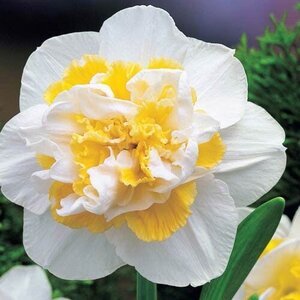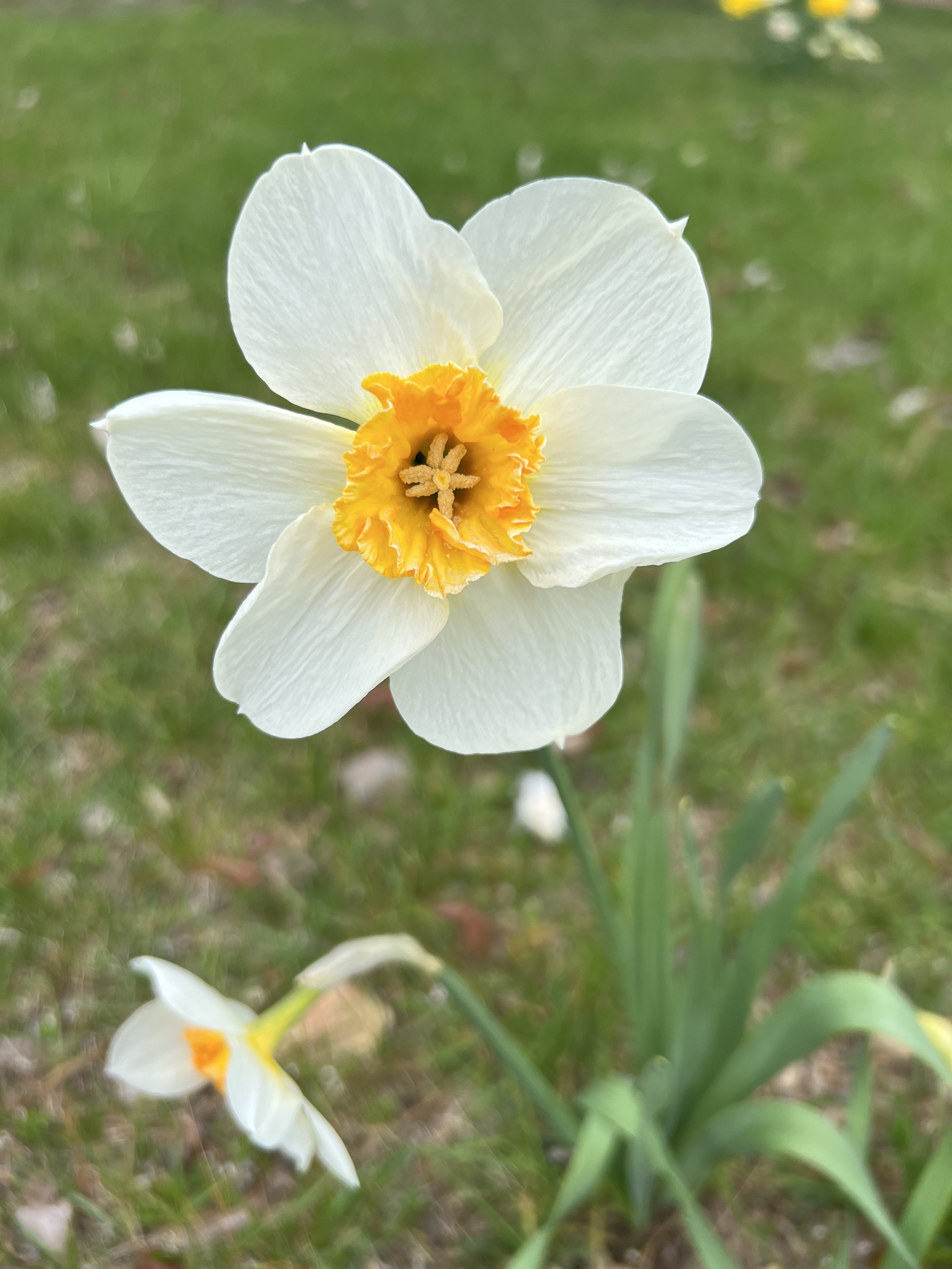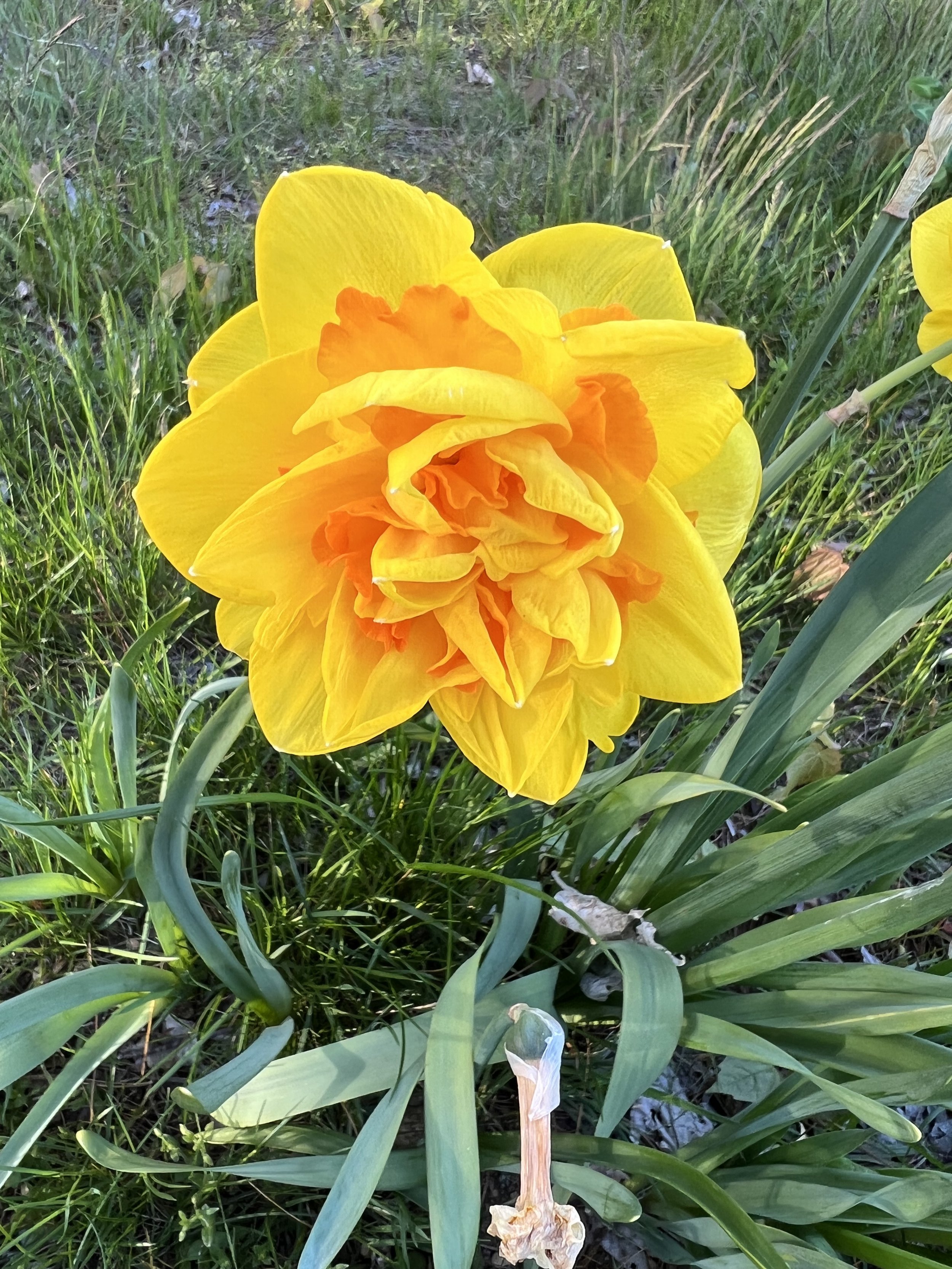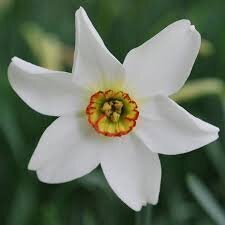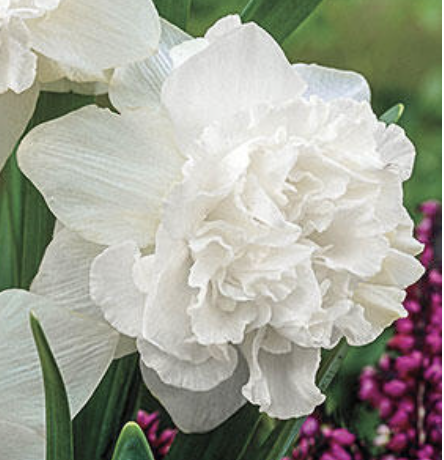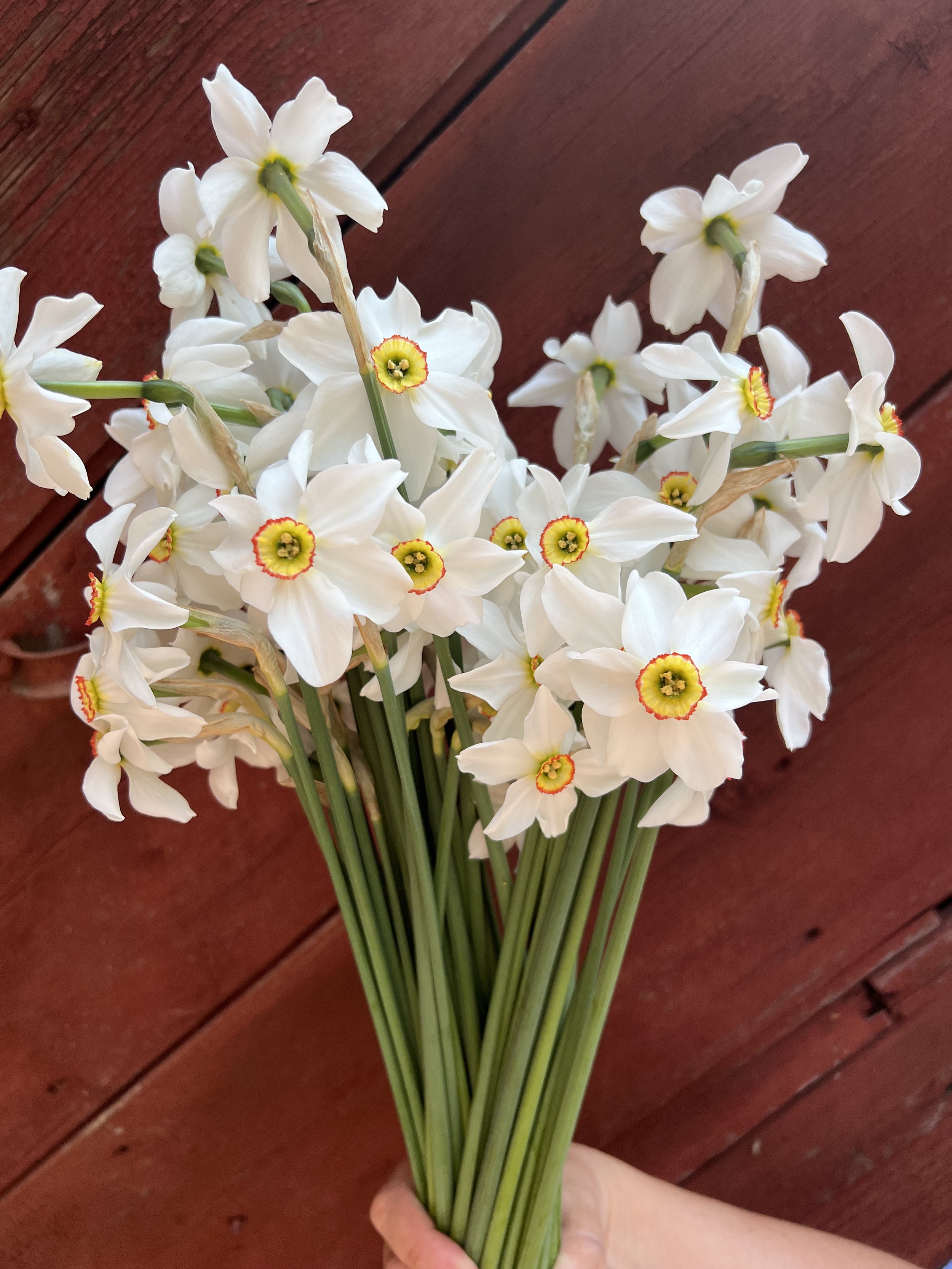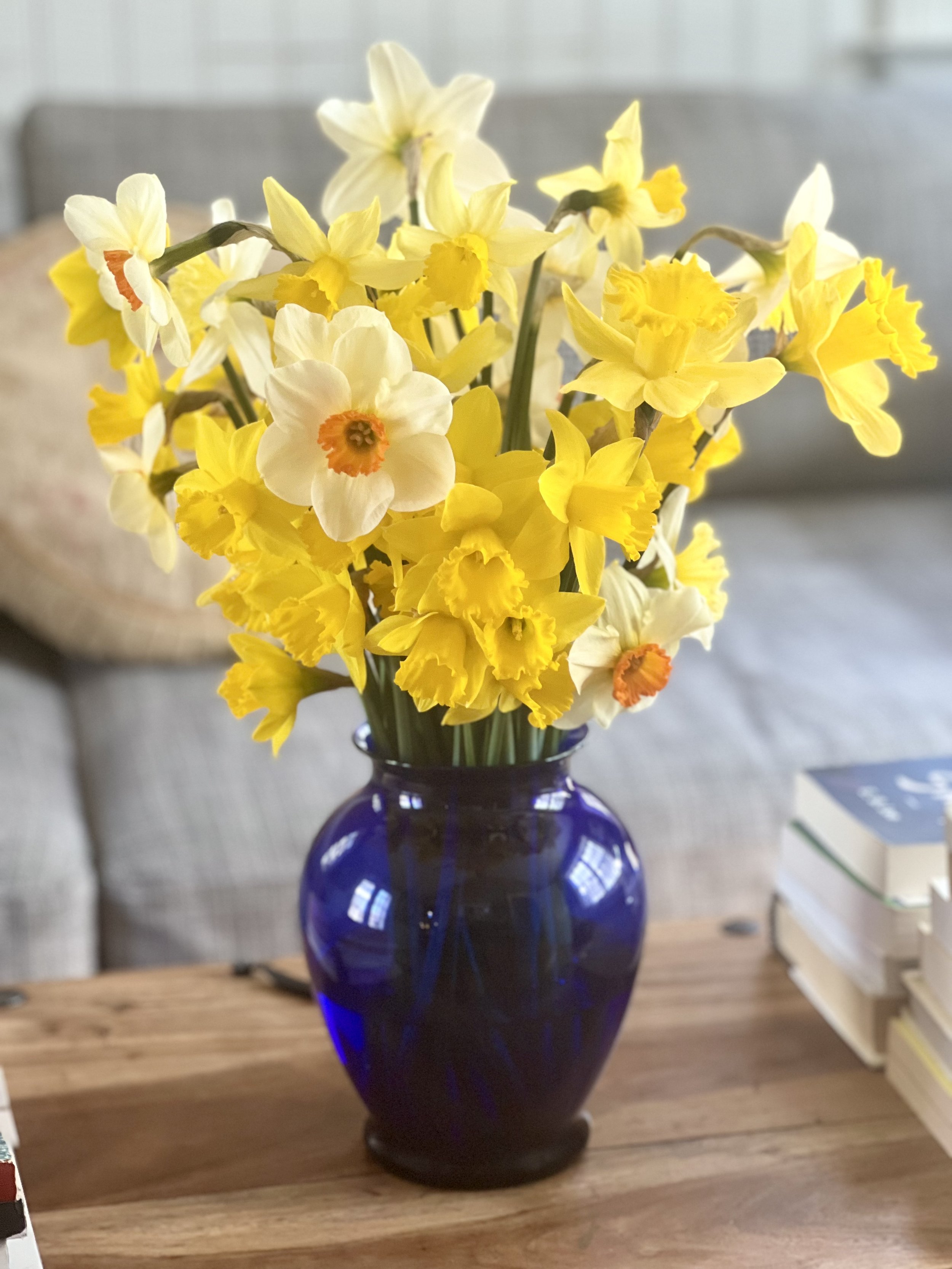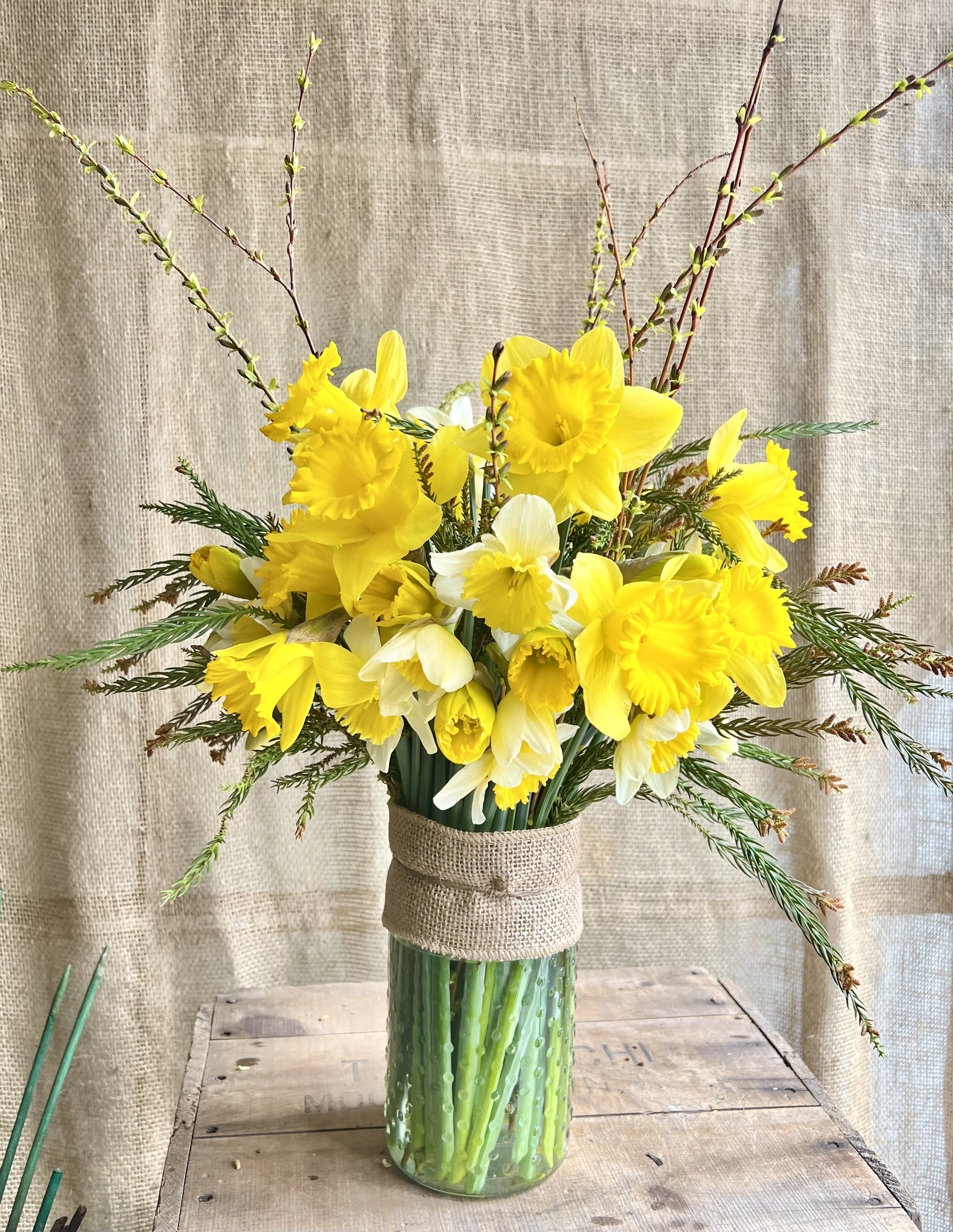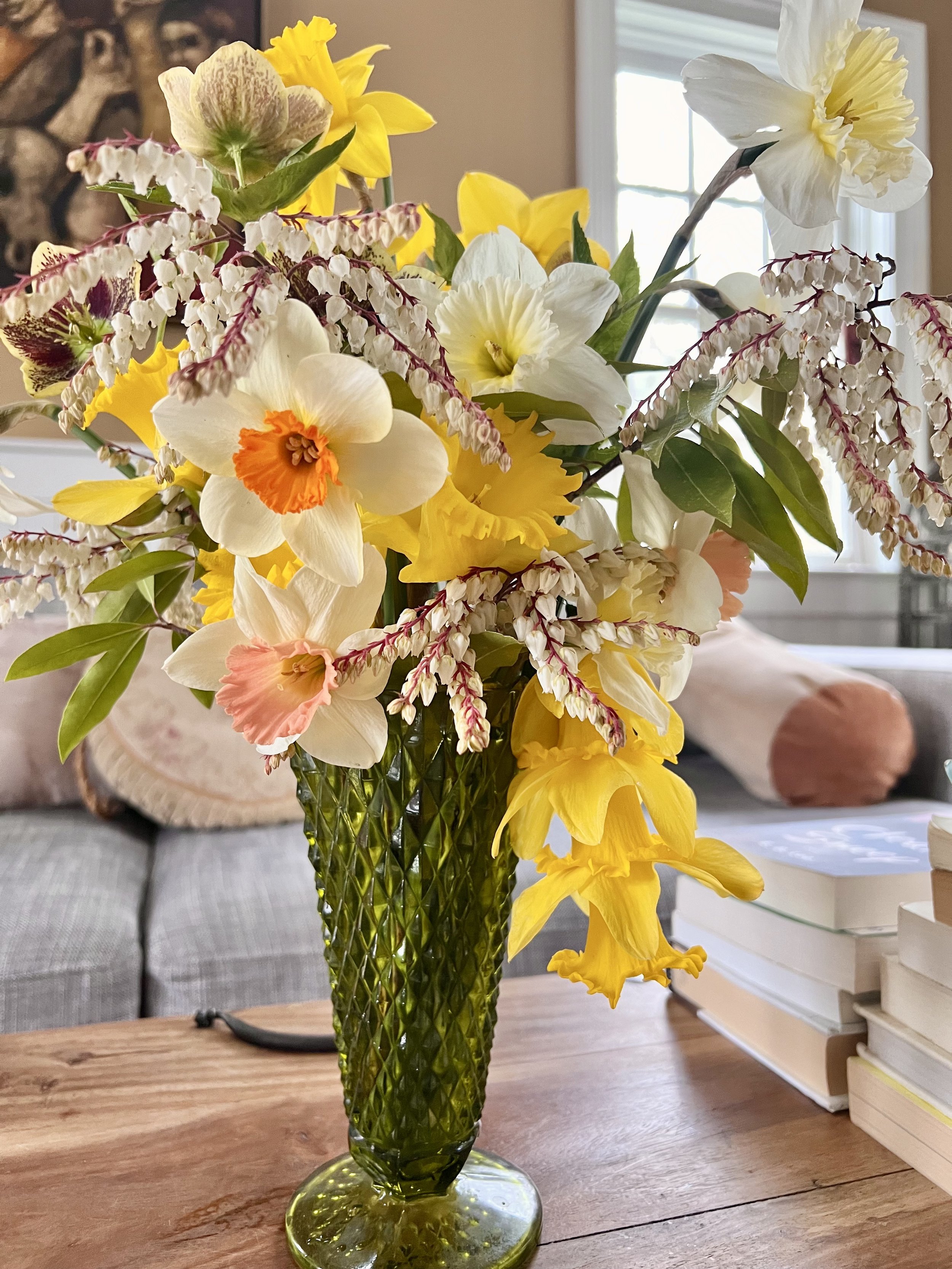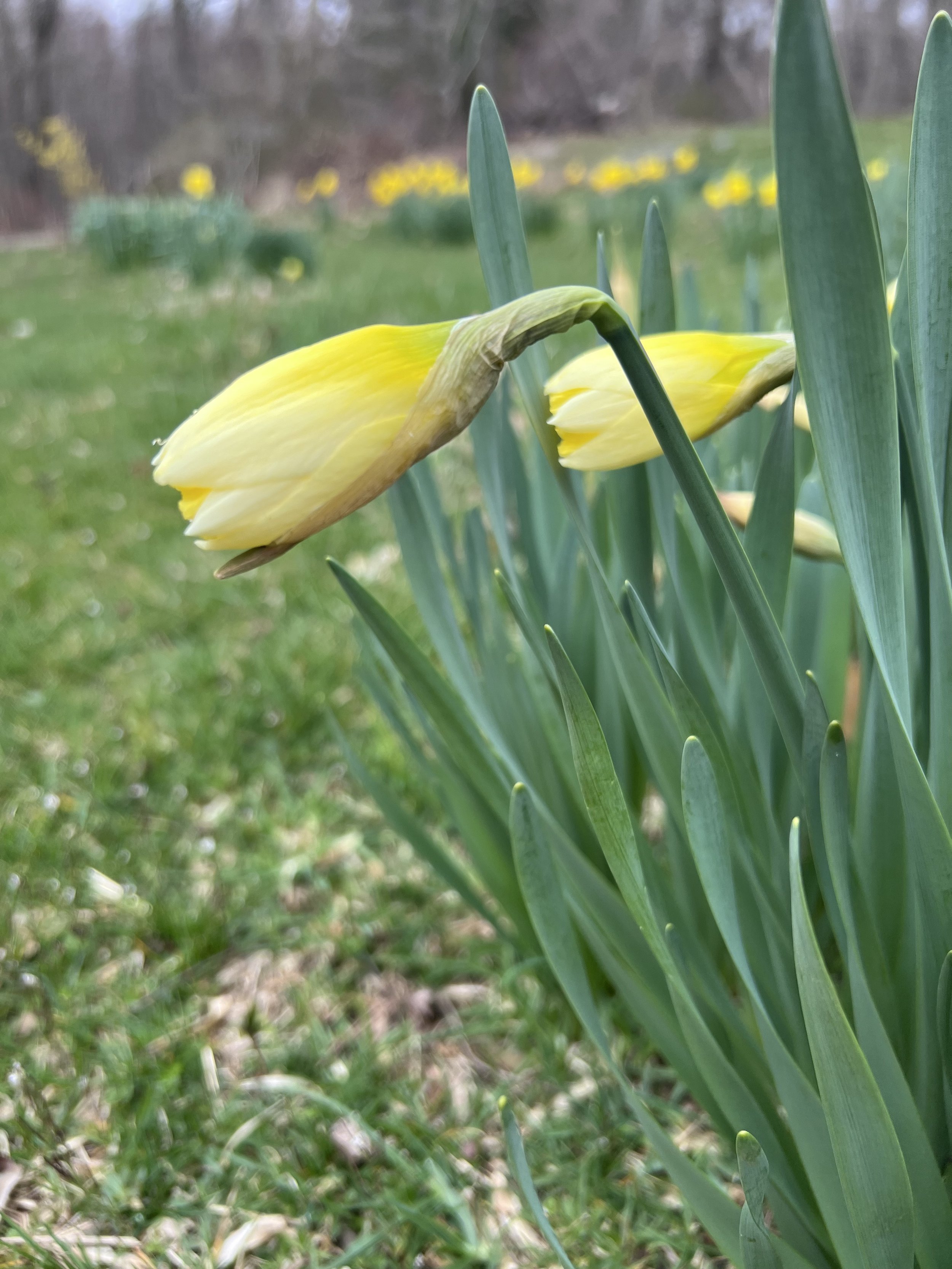Designing with Daffodils: Exploring Varieties Beyond the Ordinary
Daffodils (Narcissus) are some of my favorite spring flowers.
They are one of the first signs of spring where I live. There are so many pretty varieties, more than the common yellow daffodil that first comes to mind. There are ruffled, double, trumpet, large cupped, small cupped, and many others. They even vary in their fragrance; some are sweet while others are spicy or musky. Daffodils are perennial bulbs that grow in clumps and every few years we divide the clumps to keep them producing vigorously.
Elevate Your Floral Designs: Exploring Daffodil Varieties Beyond the Ordinary
When we think of daffodils, the image of cheerful yellow blooms dancing in the spring breeze often comes to mind. However, there's a world of daffodil varieties beyond this classic image waiting to be explored. From traditional to modern, bespoke to boho, daffodils offer endless possibilities for creating elevated floral designs that are sophisticated, refined, and utterly captivating.
There are up to 200 different daffodil species, subspecies, or varieties of species, and over 32,000 registered cultivars (named hybrids) divided among the thirteen divisions of the official classification system.
Check out The American Daffodil Society for more information on the many types of daffodils.
1. Embrace the Diversity of Daffodils:
Daffodils come in a stunning array of shapes, sizes, and colors, far beyond the familiar yellow trumpet variety. Explore the delicate beauty of white 'Thalia' daffodils, the enchanting peach hues of 'Pink Charm' or intriguing look of ‘Recurvus’. Incorporating diverse varieties adds depth and interest to your floral arrangements, elevating them from ordinary to extraordinary.
2. Mix and Match:
Don't limit yourself to using a single daffodil variety in your designs. Experiment with different combinations to create dynamic contrasts and textures. Pair the bold, frilly petals of 'Cheerfulness' daffodils with the sleek elegance of 'Ice Follies' for a striking visual impact. Mixing daffodil varieties allows you to create bespoke arrangements that reflect your unique style and personality.
3. Play with Scale:
Daffodils come in a range of sizes, from petite miniature varieties to large-cupped blooms. Playing with scale adds drama and dimension to your floral designs. Use smaller daffodils like 'Tête-à-Tête' to create delicate accents or incorporate towering varieties like 'Carlton' for a statement centerpiece that commands attention. Mixing different sizes of daffodils adds visual interest and depth to your arrangements.
4. Incorporate Unexpected Elements:
Elevate your daffodil designs by incorporating unexpected elements such as foliage, branches, or other seasonal blooms. Pairing daffodils with ferns or flowering branches introduces a whimsical, boho-inspired vibe. Don't be afraid to think outside the box and experiment with unconventional pairings to create truly memorable floral arrangements.
5. Focus on Composition:
The key to creating sophisticated and refined daffodil designs lies in thoughtful composition. Pay attention to balance, proportion, and symmetry when arranging your blooms. Consider the overall shape and structure of your arrangement, ensuring that each element complements and enhances the others. By carefully crafting your composition, you can create daffodil designs that are not only visually stunning but also harmonious and balanced.
Daffodils offer endless opportunities for creating elevated floral designs that are both sophisticated and refined. By embracing the diversity of daffodil varieties, experimenting with different combinations, playing with scale, incorporating unexpected elements, and focusing on composition, you can create truly extraordinary arrangements. So why settle for ordinary when you can elevate your floral designs with the timeless beauty of daffodils?
Pro Tips for Harvesting & Extending Vase Life
Daffodils generally have a long stem life, but harvesting daffodils at the "goose-neck" stage before the blooms open will ensure the longest vase life. At this stage the bud is tilted down and showing just a hint of color. You don’t need your snips to harvest daffodils. In fact, to get the most stem length try pulling your daffodils instead of cutting them. Grab the stem at the base near the soil and tug; you will find that you get an extra 2 to 4 inches of stem length. Daffodils emit a slimy sap that can irritate the skin, so be sure to wear gloves when harvesting.
Once you have harvested your daffodils, you want to condition them by letting them soak in cool water for a few hours. The sap that they emit is not only a possible skin irritant but is also toxic to other flower varieties when used together in arrangements, and it significantly decreases the other flowers’ vase life if they are exposed. Letting them soak allows the stems to callus over and stops the sap from oozing out. Every time you cut the daffodils you will need to re-condition them if you are arranging them with other flowers. You don’t have to worry about this if creating an arrangement of just daffodil varieties.
When should you cut your daffodils back?
After daffodils have flowered you can deadhead the bloom so that energy goes into building the bulb for next year’s flower instead of using that energy for seed production. However, daffodil leaves should NOT be cut back until after the leaves have started to turn yellow. They use their leaves to photosynthesize energy and store that energy in the bulb for next year’s flower. Daffodils continue to absorb nutrients for about six weeks after the blooms have died. During this time they need plenty of sunshine and a regular supply of water. Removing or cutting back leaves soon after flowering can severely deplete your bulbs.
Co-planting your daffodil bulbs in beds with other plants that are leafing out just as the daffodil’s leaves start turning yellow is one way to mask them.


